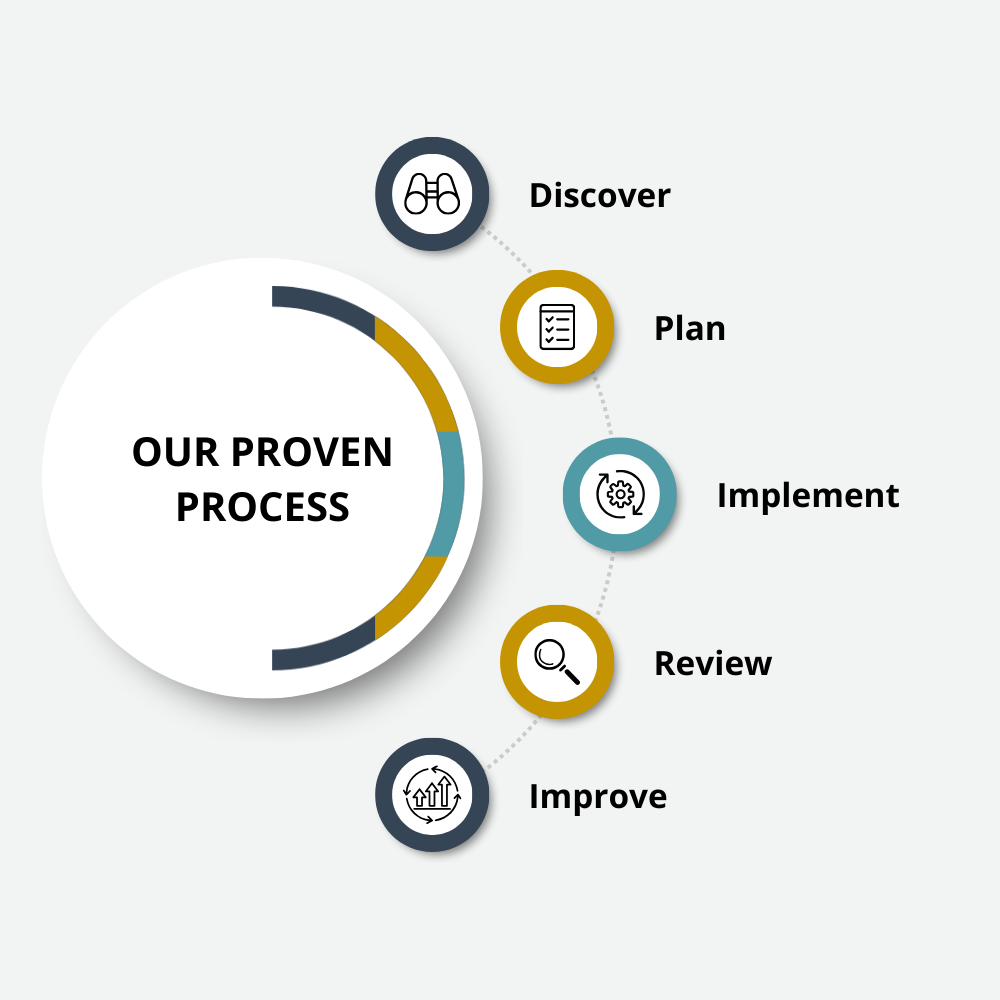Considering when to take your Social Security benefit can seem like a daunting task for some, while others feel it’s an easy choice. However, there are many variables to consider before electing to start your benefits. Here are our top 5 tips to maximize your Social Security benefit:
1. Know your benefit amount at each age.
You can elect to start receiving your Social Security retirement benefit as early as age 62. However, by doing so, you would reduce your benefits by about 30% compared to what you would receive at Full Retirement Age (FRA). And remember, once you start receiving benefits, they will remain at that level—except for cost-of-living adjustments (COLAs)—for the rest of your life.
If you were born in 1960 or later, your Full Retirement Age (FRA) is 67. By refraining from starting benefits early, you are entitled to 100% of your benefit amount at FRA. Every year you wait to collect, you receive an 8% increase in benefits. At age 70, you reach your maximum benefit amount, which is 132% of your FRA benefit amount. If you’re able to delay your claim, you may certainly reap the benefits.
2. Evaluate your spousal benefit options, even as a divorcée or widow.
If you are married, you may be eligible to collect up to half of your spouse’s benefit amount. This is contingent upon your benefit amount being less than your spouse’s benefit amount. Depending on your spouse’s age at retirement, the amount received can vary. If your spouse begins taking their benefit prior to full retirement age, you will also receive a reduced spousal benefit.
As a widow, you may be eligible to receive surviving spousal benefits. The benefit amount is based on the earnings of the deceased spouse. When you begin collecting, the benefit will change the amount you receive. As a surviving spouse at full retirement age or older, you will receive 100% of the deceased worker’s benefit amount. If you collect survivor spouse benefits between the age of 60 and the full retirement age, the reduced benefit amount will be between 71 ½ and 99% of the deceased worker’s basic amount.
Individuals who lose a spouse early, but also have a healthy earnings record, can take their widowers benefit at age 60 without drawing from their own benefit record. This can allow their own earned benefit to increase until a future date – for example age 70 – at which time they can then switch over to receiving benefits from their own earnings record.
You may still be eligible to collect spousal benefits even if you are or were divorced. As long as your marriage lasted 10 years and you are not remarried, you can request to receive benefits under your ex-spouse’s benefit record. This is especially beneficial if your ex-spouse was a higher income earner. Even if you remarried, and then later divorced again, if the criteria are met, you can still be eligible to collect benefits from your first spouse’s benefit record or from the record of your highest income earning ex-spouse. Also, collecting a spousal benefit will not affect your ex-spouse’s payments from Social Security.
3. Be aware of efficient tax strategies.
Social Security income can be taxable. According to the Social Security Administration, “About 40% of people who get Social Security must pay federal income taxes on their benefits. This usually happens if you have other substantial income in addition to your benefits.”
If you file your tax return as an individual and your combined income is between $25,000 and $34,000, you may have to pay income tax on up to 50% of your benefit amount. Combined income exceeding $34,000 may cause 85% of your Social Security benefit amount to be taxable.
For those who are married and filing jointly, if your combined income is between $32,000 and $44,000, you may have to pay income tax on up to 50% of your benefit amount. Exceeding $44,000 in combined income may make 85% of your Social Security taxable.
Working with your accountant or financial planner to create a tax-efficient income stream in retirement can help reduce taxes on your Social Security benefit amount.
4. Know how Social Security calculates your benefit amount.
When determining your benefit amount, Social Security uses your 35-year earnings record to calculate the appropriate payout. Using the “average indexed monthly earnings” over this time period formulates your primary insurance amount (PIA), which is the basis for benefits paid.
Given the average indexed calculation, a $0 earnings year can harm your benefit amount more than a reduced income year. For this reason, it may be beneficial to continue working part-time in retirement to enhance your overall benefit figure.
Be sure to check your earnings record. You can review your earnings history through the Social Security Administration website or by contacting your local Social Security office. You can also sign up for a free online account at https://www.ssa.gov/myaccount/. When viewing your earnings record, look for gaps in your earnings history. Confirming the accuracy of your record can improve your benefit payout.
Of course, life happens, and some people may need to stop working before age 62. This could mean a lower benefit amount if you have years with no earnings. As stated by the Social Security Administration, “If you can’t work because of health problems, consider applying for Social Security disability benefits. The disability benefit amount is the same as a full, unreduced retirement benefit. If you get Social Security disability benefits when you reach full retirement age, we convert those benefits to retirement benefits.”
5. Understand the impact of earned income
If you choose to work while receiving Social Security benefits, be aware of income limits. As stated by the Social Security Administration, “In 2024, if you’re under full retirement age, the annual earnings limit is $22,320. If you will reach full retirement age in 2024, the limit on your earnings for the months before full retirement age is $59,520.”
While working prior to FRA, earnings over the IRS income limit can reduce your benefit amount. For every $2 earned over the limit, your benefit will be reduced by $1. In the year you reach FRA, Social Security will deduct $1 in benefits for every $3 earned above $59,520. Once you reach FRA, your benefits will be recalculated. On the other hand, if you begin receiving benefits at FRA or later, your benefits will not be reduced, regardless of how much other income you receive.
Social Security, while it can seem simple, requires knowledge and intelligence to help maximize your benefits. Your circumstances are unique to you. There is not a one-size-fits-all solution for when to pull the lever to receive Social Security. It is important to evaluate your options and work through the right scenario for you with your fiduciary advisor and tax accountant. Good planning can make a difference in your future income.




















